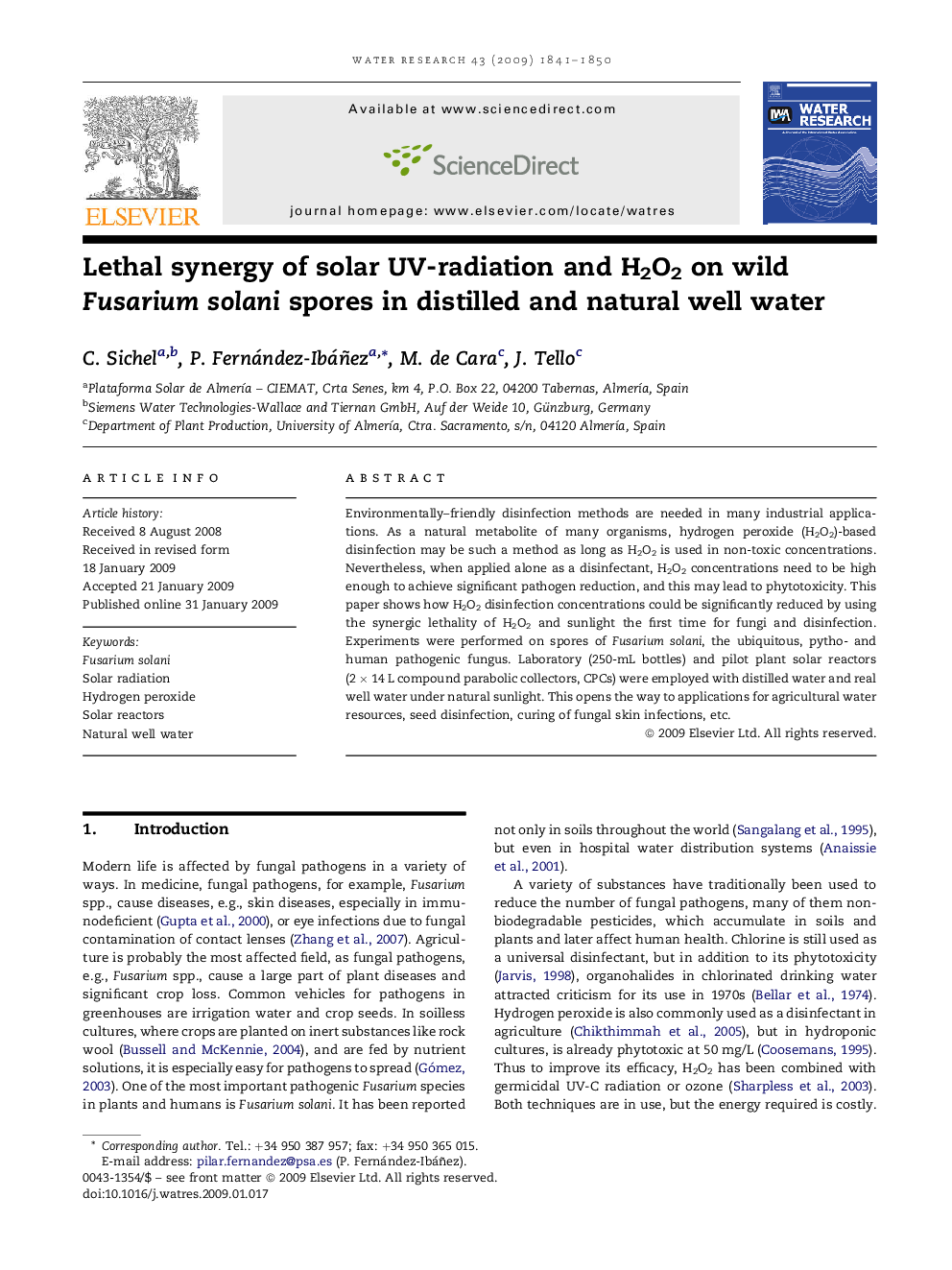| Article ID | Journal | Published Year | Pages | File Type |
|---|---|---|---|---|
| 4484468 | Water Research | 2009 | 10 Pages |
Environmentally–friendly disinfection methods are needed in many industrial applications. As a natural metabolite of many organisms, hydrogen peroxide (H2O2)-based disinfection may be such a method as long as H2O2 is used in non-toxic concentrations. Nevertheless, when applied alone as a disinfectant, H2O2 concentrations need to be high enough to achieve significant pathogen reduction, and this may lead to phytotoxicity. This paper shows how H2O2 disinfection concentrations could be significantly reduced by using the synergic lethality of H2O2 and sunlight the first time for fungi and disinfection. Experiments were performed on spores of Fusarium solani, the ubiquitous, pytho- and human pathogenic fungus. Laboratory (250-mL bottles) and pilot plant solar reactors (2 × 14 L compound parabolic collectors, CPCs) were employed with distilled water and real well water under natural sunlight. This opens the way to applications for agricultural water resources, seed disinfection, curing of fungal skin infections, etc.
